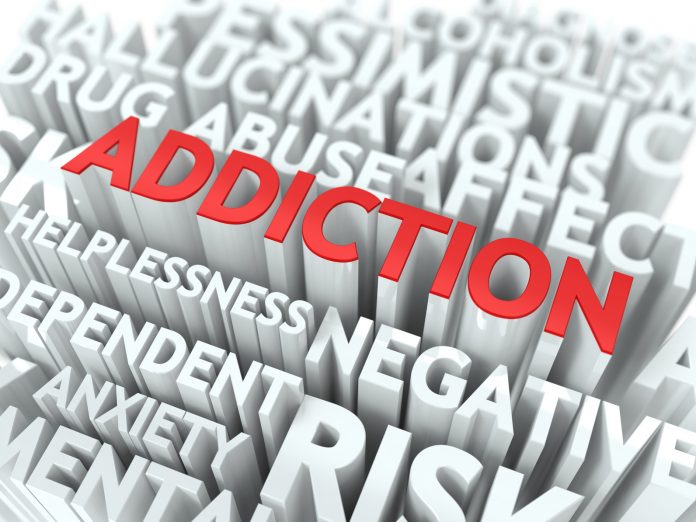This article is written by Akshita Rohatgi, from Guru Gobind Singh Indraprastha University, New Delhi. It discusses the rehabilitation provisions in the Narcotic Drugs and Psychotropic Substances (NDPS) Act, the Drug De-Addiction Programme and the National Program for Tobacco Control and Drug Addiction Treatment. The author concludes by comparing India to other jurisdictions and analyzes their experiences to suggest a way forward.
This article has been published by Sneha Mahawar.
Table of Contents
Introduction
Article 47 of the Indian Constitution imposes an obligation to the State to endeavour to bring about prohibition of the consumption of intoxicating drinks and of drugs which are injurious to health except those used for medicinal purposes. India has also signed various international treaties and conventions to mitigate the menace of drug abuse. This includes the United Nations (UN) Convention on Narcotic Drugs (1961), United Nations (UN) Convention on Psychotropic Substances (1971), United Nations (UN) Convention against Illicit Traffic in Narcotic Drugs and Psychotropic Substances (1988) and Transnational Convention Crime (2000). To this end, the rehabilitation of those suffering from drug addiction is essential.
Recent high profile allegations of drug use in Bollywood have brought India’s drug control policy to the mainstream discussion. Various high profile celebrities were called out and publicly castigated for allegedly taking drugs. In the background of this, the Ministry of Social Justice and Empowerment called for a ‘humane’ approach to offenders, saying that drug users are victims that need de-addiction and rehabilitation, not jail. It called for the decriminalisation of possessions of ‘small quantities’ of drugs that are only for personal consumption. This is in line with the approach of experts who work with those suffering from Substance Use Disorder (SUD). To understand this perspective, it is imperative to look at the status quo of rehabilitation provisions for addicts in Indian law. This article sheds light on rehabilitation provisions in the Narcotic Drugs and Psychotropic Substances (NDPS) Act, 1985 and other allied schemes and concludes by providing suggestions for a more suitable policy towards addicts in India.
Narcotic Drugs and Psychotropic Substances (NDPS) Act, 1985
The National Drugs and Psychotropic Substances Act was enacted back in 1985, a time when the scale of the drug abuse problem was rapidly expanding in India. The law’s main objective was to curb the supply of drugs, from production to possession to sale, storage, transport or consumption of any narcotic drug or psychotropic substance. It covers three types of stimulants-
- Narcotic drugs like opium, cannabis and poppy straw;
- Psychotropic substances, which includes stimulants like LSD, Amphetamines, Methamphetamines and MDMA; and
- Controlled substances that are used to manufacture narcotic drugs or psychotropic substances.
At the same time, the Act also focused on demand-side measures by undertaking to establish de-addiction centres for addicts. It recognized that the rehabilitation of drug addicts provides them with a better lifestyle. Thus, it not only improves the growth of a country but also fulfils the government’s goal of social justice.
De-addiction provisions
The NDPS Act (hereinafter referred to as ‘the Act’) includes various provisions regarding the de-addiction procedure and the creation of such centres by the government. Section 71 imposes the obligation of establishing identification and de-addiction centres for addicts in the country. Moreover, it imposes the positive obligation of education and social development of addicts who undergo de-addiction treatment in the State.
Under Section 39 of the NDPS Act, they have the discretion to send convicted offenders to de-addiction centres if the offender consents to it. Moreover, under Section 64, a tender of immunity for immunity from prosecution can be made by the Central or State Government. This is awarded to an offender in return for giving evidence for a prosecution related to the NDPS Act. The extent of the immunity is determined by the tender and wilful concealment or false evidence may be withdrawn.
Under Section 64A, prosecution against an alleged offender can be withdrawn if they are caught with a small amount of narcotic drugs or psychotropic substances if they volunteer for treatment at a hospital or an institution maintained or recognised by the Government or local authority. This immunity can be withdrawn if they fail to complete the de-addiction treatment.
Punishments
The punishments and penalties for the various offences under the NDPS act are described as follows:
| Provisions involved | Offences described | Penalty prescribed |
| Section 18(c) for opiumSection 20 for cannabisSection 16 for coca | This punishes the cultivation of opium, cannabis or coca plants without licence. | Cultivation is punishable by rigorous imprisonment up to 10 years along with a fine of up to Rs.1 lakh. |
| Section 19 | This punishes the embezzlement of opium by a licensed farmer. | Embezzlement is punishable by rigorous imprisonment of 10 to 20 years along with a fine ranging from Rs. 1 to 2 lakhs, regardless of the quantity. |
| Section 17 for prepared opiumSection 18 for OpiumSection 20 for CannabisSection 21 for Manufactured drugs or their preparationsSection 22 for Psychotropic substances | This punishes the production, manufacture, possession, sale, purchase, transport, import inter-state, export inter-state or use of narcotic drugs and psychotropic substances. | In case of a small quantity of narcotic drugs or psychotropic substances, rigorous imprisonment of up to 6 months or fine up to Rs. 10,000 or both. More than small quantity but less than commercial quantity is punished by rigorous imprisonment of up to 10 years along with a fine up to Rs. 1 Lakhs. Commercial quantity is punished by Rigorous imprisonment 10 to 20 years along with a fine of Rs. 1 to 2 Lakhs. |
| Section 23 | This punishes the import, export or transhipment of narcotic drugs and psychotropic substances. | The punishment prescribed is the same as above. |
| Section 24 | This provision punishes external dealings in NDPS, i.e. engaging in or controlling trade whereby drugs are obtained from outside India and supplied to a person outside India. | This is punishable by rigorous imprisonment 10 to 20 years along with a fine of Rs. 1 to 2 lakhs, regardless of the quantity. |
| Section 25 | This punishes knowingly allowing one’s premises to be used for committing an offence. | The punishment described is the same as for the commission of the actual offence. |
| Section 25A | The given provision penalises violations pertaining to controlled substances, i.e., precursors. | The prescribed punishment is rigorous imprisonment of up to 10 years along with a fine of Rs. 1 to 2 lakhs. |
| Section 27A | This provision punishes financing traffic and harbouring offenders. | The prescribed penalty is rigorous imprisonment of 10 to 20 years along with a fine of Rs. 1 to 2 lakhs. |
| Section 28 for AttemptsSection 29 for Abetment and criminal conspiracy | This provision deals with attempts, abetment and criminal conspiracy. | The penalty prescribed is the same as for the offence. |
| Section 30 | The given provision refers to preparation to commit an offence. | Half the punishment for the offence. |
| Section 31Section 31A | The given Section deals with repeat offences. | The penalty for a repeat offence is one and a half times the punishment for the commission of the actual offence. A 2014 amendment allowed the imposition of the death penalty in certain cases. |
| Section 64 Section 64A for immunity | The given Section deals with the consumption of drugs and immunity offered. | The penalty for cocaine, morphine, heroin is rigorous imprisonment up to 1 year or a fine up to Rs. 20,000 or both, whereas, for other drugs, there is imprisonment of up to 6 months or a fine up to Rs. 10,000 or both. Addicts volunteering for treatment enjoy immunity from prosecution. |
| Section 32 | This Section prescribes the punishment for violations not elsewhere specified. | The penalty prescribed is Imprisonment for up to six months or fine or both. |
National Program for Tobacco Control and Drug Addiction Treatment
Originally called the Drug De- Addiction Programme (DDAP), the National Program for Tobacco Control and Drug Addiction Treatment (NPTCDAT) originated in 1988, according to the recommendations of a Cabinet Sub Committee on drug control. It aims to provide affordable, accessible and evidence-based treatments for all Substance Use Disorders (SUD), through government facilities.
Under the efforts of the Ministry of Health and Family Welfare (MoHFW), it builds the capacities of governmental health care staff in recognizing and managing SUDs. It provides financial help for post abuse treatment facilities in certain Central Government Hospitals and institutions. To this end, National Nodal Centre, the ‘National Drug Dependence Treatment Centre (NDDTC)’ has been established under the All India Institute of Medical Sciences (AIIMS), New Delhi in Ghaziabad (U.P.). It coordinates the services of more than two dozen Drug Treatment Clinics (DTCs) in the country. For the full list of centres, click here.
The programme works towards reducing the demand for drugs through activities like awareness building, treatment and de-addiction. It conducts research and provides training to doctors working in de-addiction. This is in line with the recommendation of SUD experts who encourage a reduction in demand for drugs, instead of supply-side measures.
National Action Plan for Drug Demand Reduction
The National Action Plan for Drug Demand Reduction (NAPDDR) by the Ministry of Social Justice and Empowerment lays down a structured pathway to reducing adverse consequences of drug abuse. This includes awareness generation initiatives in colleges and schools, peer-led and community-based interactions, intervention programmes for adolescents and youth vulnerable to abuse, seminars and workshops with parents, capacity building of service providers and better treatment facilities.
The programme extends to focused intervention in vulnerable districts, promoting collective initiatives and self-help among those vulnerable to addiction or individuals found at risk. This is supplemented by other community-based services for the identification, motivation, counselling, de-addiction, aftercare and de-addiction for Whole Person Recovery (WPR) of addicts.
Drug demand reduction in countries outside India
USA
The United States of America’s federal system of laws causes significant variation in inter-state drug and de-addiction policies. The broad trend within the country is the criminalisation of possession of illegal drugs and controlled substances with the potential for dependence and abuse. The crime of simple possession is committed when someone has a small amount of drugs available for their own use, without the intent to sell or give to others.
Under federal law, simple possession is a misdemeanour and entails imprisonment for one year or less for the first offence. The term of imprisonment may also vary according to state laws.
The policies for de-addiction vary according to state laws. Generally, those with SUD (Substance Use Disorders) are not permitted to receive treatment without voluntarily committing to staying clean. Moreover, health authorities are reluctant to fund the treatment in case of a multiplicity of barriers to success.
Civil commitment laws
Laws for involuntary treatment typically take the form of civil commitment laws. Such laws allow those suffering from a particular disease to be admitted into treatment facilities. In 37 US states along with DC, SUDs can be classified under the umbrella of mental illnesses after requisite psychiatric assessment. Out of these, only 5 states put an involuntary SUD commitment under the definition of a mental disorder. 13 US states explicitly exclude SUD from involuntary commitment for treatment.
Civil commitment laws for involuntary SUD treatment are applicable here. 37 US states have provisions for the involuntary treatment of those suffering from SUDs. For instance, Kentucky enacted Casey’s law of 2004 that gave the families of addicts the right to initiate court-ordered de-addiction treatment. This law rests on the rationale that addicts are substance-impaired and incapable of seeking help. They need others to intervene and help them out. In Ohio, Casey’s law is made more stringent with the added requirement of proof that the addict would benefit from the treatment.
State variations
In civil commitment laws too, there are variations in state-level drug control and de-addiction policy.
- In Alaska and Connecticut, a person can be admitted to court-ordered treatment if they are deemed to pose danger to themselves or to others.
- In Arizona, mandatory treatment for addiction needs a written application from a friend, relative, a peace officer or a police officer.
- In Colorado, those who have harmed others may intend to harm others or are incapacitated owing to drugs or controlled substances can be involuntarily committed to treatment.
- In Delaware and Lowa, any person may petition to commit others to a treatment centre.
- In Mississippi, committing someone to involuntary treatment costs $150.
- In Indiana and Wyoming, involuntary treatment is not allowed if a person has been charged with an offence.
- In the case of Louisiana, a coroner or minister needs to commit someone with SUD for medical treatment. Moreover, the sheriff or police officer is allowed to detain a person for 72 hours for an assessment.
- The Rhode Island law allows involuntary treatment for alcoholism but not SUDs.
- Vermont adds a condition of a written recommendation from a physician for involuntary commitment to treatment.
South Africa
Recreational use of all drugs other than cannabis has been criminalised by the South African Drugs and Drug Trafficking Act 140 of 1992. This includes the widely used Nyaope made of heroin, cannabis, other antiretroviral drugs and other materials. This is owing to the fact that widespread drug abuse is a significant problem in South Africa and leads to a sharp increase in drug abuse and crime in the country that it causes.
Cannabis
In the 2018 case of Minister of Justice and Constitutional Development v. Prince, South Africa decriminalised the private consumption of cannabis. Thus, an adult may possess and consume cannabis in private, away from the public, including children and non-consenting adults.
Currently, there are no quantitative limits on what quantity adults are allowed to carry, consume or produce. It is the domain of the legislature to specify this. In 2020, the Cannabis for Private Purposes Bill was brought out. The Bill has not been passed yet.
Criticism and recommendations
The South African Drug policy has been widely criticised for criminalising drug users and traffickers in the same manner through imprisonment. Harsh sentences are meted out to drug traffickers who might also be victims of drug abuse themselves.
It is pertinent to point out that often, imprisonment does not deter those with drug abuse problems. This approach was considered ‘latching the stable door after the horse has bolted’. According to Mampolokeng Monyakane of the University of South Africa, innovative means and early involvement of medical experts are better approaches to combat the drug endemic. Early interventions would ensure that drug abusers are not punished without being healed.
A robust system of correctional facilities is needed to this end. However, South Africa has a dearth of facilities and professionals. This would need urgent development of forensic care facilities. A roadmap towards developing this would need the South African Department of Justice and the South African Department of Health to collaborate on this issue.
Additionally, the police need to work hand in hand with mental health professionals and the special police force investigating drugs must be trained with identifying high-risk cases. This would mitigate the risks of addiction before the justice system kicks in.
United Kingdom
With the Misuse of Drugs Act, 1971 at the centre, the UK’s drug control legislation is predominantly based on prohibition and criminalization. The comparatively minor drug-related offences garner non-criminal sanctions with diversion schemes like treatment and referral to drug awareness programmes.
Deaths and review
In recent years, this strategy has come under fire by activists, academicians and medical experts as the pandemic witnessed drug-related deaths soaring to record levels in the country. As the view of the UK’s drug policy increasingly turned against it, calling it ineffective and counterproductive, the government commissioned a review of this policy.
Led by independent expert Carol Black, the review highlighted how the UK’s half-a-century old drug policy was unable to curtail either rising demand or availability of drugs. Crumbling government infrastructure coupled with ineffective de-addiction services had a significant role to play here.
The 2021 policy
This report triggered a widely- publicised ‘reform’ by the UK government, announced via publication of a fresh policy document. Titled ‘From harm to hope: A 10-year drugs plan to cut crime and save lives’, the document detailed a strategy to reduce the demand and the supply of drugs and deliver better quality of de-addiction and recovery services. It broke the trend of de-addiction funding cuts by increasing the total budget outlay for de-addiction programmes, now amounting to £780 Million for three years. The new strategy also included housing, employment as well as community care provisions for drug users.
At the same time, the new strategy allocates ‘tough enforcement’ twice the funding than it does to de-addiction services. It has been castigated for continuing with a punitive approach to the war against drugs, in spite of touting itself as a reform. The new policy ends up content with the status quo, by making peace with the tried, tested and failed approach of criminalisation of addiction.
China
Decriminalisation model
The Chinese strategy towards drug control and prevention underwent a radical reform in 2007, by the passing of the Anti-Drug law. This law was based on a strategy to balance leniency and severity while curbing arbitrary preventive detention. Now, drug users were looked at as victims of dependency and de-addiction was preferred over penalisation. Pursuant to this, the use of drugs in China is categorised as an administrative offence, as opposed to a criminal one.
The Chinese system categorises drug de-addiction treatment into four stages:
- Voluntary treatment,
- Community-based treatment,
- Compulsory isolated treatment (CIT),
- Community-based rehabilitation.
But not really
At first glance, it is a model drug control policy. However, a deeper dive reveals that this is not the case. The Chinese strategy focuses heavily on coercive, custodial methods that disregard the basic liberty of the sufferers by enforcement of rehabilitation in detention. It forces addicts to go through a compulsory nine years of coercive treatment, increasing the stakes and deterring addicts from opting for treatment.
In certain situations, the government may order an addict to be detained for rehabilitation without a criminal conviction, trial or right to appeal. Moreover, the Chinese Criminal Code classifies trafficking, production, supply as criminal offences, with punishments from up to 3 years of jail to the death penalty. There is compulsory registration and a ban on driving licence for those with a record of using drugs, thus increasing the stigma among victims and preventing them from seeking help.
Therein lies the inconsistency in the Chinese approach. While drug use is officially considered ‘decriminalised’, the punitive administrative sanctions hark back to prohibition-era thinking.
The way forward
Infrastructure
As explained above, the NDPS Act gives addicts immunity from prosecution, providing them with the option to undergo de-addiction treatment at de-addiction centres. To examine the impact of the Act, Vidhi Centre for Legal Policy surveyed several districts in Punjab in its study titled ‘from addict to Convict: the working of the NDPS Act in Punjab’. This state was chosen due to the massive scale of its drug crisis. Its report revealed that between 2013-15, none of the accused under the Act were mandated to attend de-addiction centres.
The report highlighted the infrastructural issues in government-run de-addiction treatments. Government facilities for de-addiction are insufficient, considering the number of people suffering from drug addiction. Only 26 out of the total 31 rehab centres in the state were found to be functional. According to Dr. Debashish Basu, Professor of Psychiatry, the beds available at a de-addiction centre he interacted with was just 20, even as around 2,000 new patients and 8,000 older follow-ups come to the centre annually.
According to governmental figures of 2016, 1.49 lakh patients came to both government and private centres in Punjab for de-addiction. As of 2018, there were only 96 de-addiction and 77 private rehab centres in the state. The COVID19 pandemic and the consequent lockdown hindered the supply of drugs and narcotics in the state. This resulted in a spike of addicts opting to join the government’s de-addiction centre. In April 2020, the number of registered addicts with the government’s health department spiked to 4.14 lakh.
Facilities available at government-run centres are not enough to cater to those who approach it. Lack of adequate infrastructure for the de-addiction of addicts encumbers the State’s capacity to handle the drug problem. Thus, there is an urgent need for the allocation of more resources to this cause.
The attitude of courts
There is a stark gap between the letter of the law, i.e. the mandate of the NDPS Act and ground-level enforcement of it. Insensitive judges look at drug users as criminals instead of patients in need of help. They use the discretion awarded by the NDPS Act to send consumers of drugs to jail instead of de-addiction centres.
This liberty in the hands of judges to allow suffering addicts a chance to get better is sparsely used due to the lack of tangible guidelines in the law. This continues unabated due to an absence of political will to set up the machinery to enforce de-addiction and a lack of policy measures to sensitise judges. Statutory guidelines to minimise the discretion awarded to individual judges is one way to break this trend.
Treatment of addicts
Critiques of the Indian policy on drugs argue that a fundamental flaw in the Act is the criminalization of addiction. The Indian Psychiatric Society published a report in 2016, acknowledging addiction as a serious disease and emphasising the need for de-addiction centres. Addicts can not stop consuming drugs as a result of their disease. It is argued that criminalising this consumption is akin to criminalising the disease itself.
Nevertheless, Section 27 of the Act punishes the consumption of any narcotic drug or psychotropic substance. Various NGOs that work with addicts argued Section 27 goes against the stated legislative intent of de-addiction and reformation of addicts.
This is a logically unsound approach. Consider an analogy- those suffering from madness have an unsound mind. Thus, they are exempted from criminal sanctions and incarceration. This is because they did not have the self-control to stop committing this crime. Similarly, addicts often are not able to control their want of consuming drugs. Nevertheless, the legal system turns a blind eye to this by making the act of consumption an offence in itself.
Incarceration further adds to the stigma among drug users and discourages them from seeking the help they need. A more effective approach to combating the drug epidemic is ending the stigma attached to drug use and providing better facilities for de-addiction for users.
Hard and soft drugs
The NDPS also refuses to make any distinction between ‘hard’ drugs- heroin and cocaine, which are more addictive and ‘soft’ drugs – like cannabis, which are comparatively less addictive in nature. Thus, consumers of soft drugs are being labelled as ‘criminals’ by the act already. They would have no legal incentive to forgo the consumption of hard drugs in favour of soft ones since the penalty for the consumption of both is the same.
Addicts and casual users
The distinction between casual users and addicts is an important one. Treating them as one and the same is a bad idea. The Vidhi report flagged the problem of a lack of any distinction between those who simply consume the drugs and the addicts.
The legislative deliberations in 1985 while the act was being considered, failed to differentiate between the two. More than two decades later, the Standing Committee Report of 2011 made a futile attempt to rectify this by attributing comparatively lesser guilt to the ‘addict’ but demanding penal sanctions against them too. It failed to mitigate the problem by claiming that such a provision was necessary to encourage deterrence.
The NDPS act must forgo its focus on uniformity and acknowledge the various classes of drug and psychotropic substance holders. Treating addicts, casual users and commercial drug lords as one and the same hurts the efficacy of drug control measures and hurts the actions of NGOs to rehabilitate addicts.
Conclusion
Having examined the drug control policy in India and its issues, there is a clear need to amend our drug policy from being centred on de-addiction instead of criminalization. Disproportionate and harsh punishments tend to treat victims as criminals and have the effect of incarcerating innocents. This takes the focus away from drug dealers and traffickers who profit off of this immoral activity.
Reducing the demand for drugs, instead of the supply is the way forward. Those addicted to drugs need to be provided with the medical attention they need and law enforcement can focus on the hardened criminals. Ramping up medical infrastructure and mental health institutions is imperative to win the drug war.
To achieve this end, we need to give a legal sanction to the distinction between consumers and addicts. Decriminalising the consumption of certain drugs is the need of the hour. Those consuming soft drugs infrequently should not be subjected to any legal penalising. This would help reduce the stigma and help prioritise those who need help. Harsh punishments can be reserved for traffickers and smugglers who prey on innocents by treating the drug trade as a commercial activity.
References
- Drugs de-addiction programme.pdf (mohfw.gov.in)
- Scheme for NAPDDR.pdf (socialjustice.nic.in)
- Drug Addicts In Punjab Being Sent To Jail And Not Rehab, Study Finds (ww.ndtv.com)
- From Addict to Convict, Vidhi Centre for Legal Policy (vidhi legal policy.in)
- Neha Singhal, India’s Anti-Narcotics Law is in Urgent Need of Rehab (the wire.in)
- CLINICAL PRACTICE GUIDELINES on Newer and Emerging Addictive Disorders in India. pp.16, 21, 274 (Indian Journal of Psychiatry)
- ‘Drug Users Need Rehabilitation, Not Jail’: Social Justice Ministry Calls for Humane Approach (www.thewire.in)
- Over 26,000 drug addicts join Punjab’s de-addiction programme during curfew – India News (indiatoday.in)
- Poor Infrastructure Hinders Functioning At De-Addiction Units | Tehelka
- Irrationality In South African Crime Of Possession And Use Of Nyaope And Its Possible Influences On The Missing Health Oriented State Interventions For Nyaope Addicts | SciTechnol
- States with Mandatory Addiction Treatment Laws (landmarkrecovery.com)
- The South African Drugs and Drug Trafficking Act 140 of 1992 Read with the South African Criminal Law Amendment Act 105 of 1997: An Example of a One Size Fits All Punishment? | SpringerLink
- The Criminalization of the Addictions: Journal of Legal Medicine: Vol 24, No 3 (tandfonline.com)
Students of Lawsikho courses regularly produce writing assignments and work on practical exercises as a part of their coursework and develop themselves in real-life practical skills.
LawSikho has created a telegram group for exchanging legal knowledge, referrals, and various opportunities. You can click on this link and join:
Follow us on Instagram and subscribe to our YouTube channel for more amazing legal content.
 Serato DJ Crack 2025Serato DJ PRO Crack
Serato DJ Crack 2025Serato DJ PRO Crack












 Allow notifications
Allow notifications



